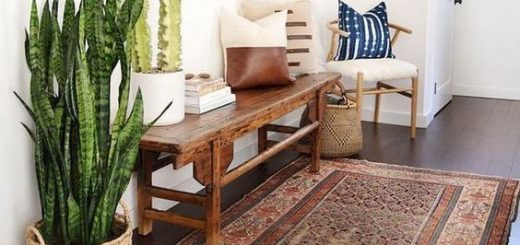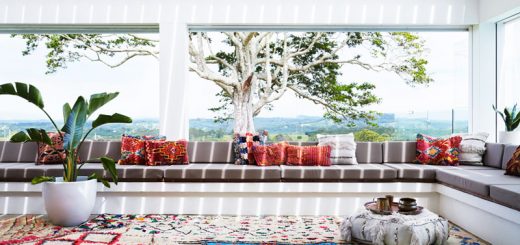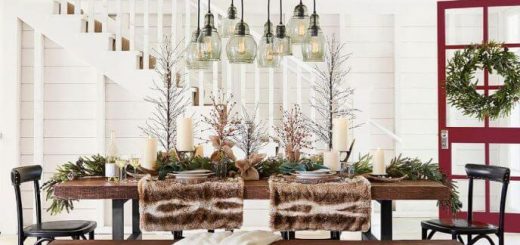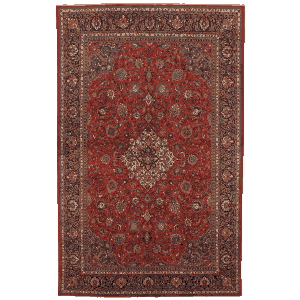Tips to Match a Persian Rug with Your Home
Many choose Persian rugs to decorate their homes. Beautiful and authentic, hand-woven varieties are often desired for their uniqueness, character, and durability. Their origins go back thousands of years in what is now called Iran (previously Persia).
They have endured for many generations and in many cultural, societal, and historical contexts. Today, the only challenge to the Persian rug’s existence is how to perfectly match it with your home.
Persian rugs history dates back over 2,500 years.(1) In 539 B.C., Cyrus the Great conquered Babylon, and his wonder at the art form helped expand the craft. Carpet weaving initially catered to the needs of protecting nomadic tribesman from the cold. From generation to generation, the skill of crafting these intricate rugs developed.
Later, carpeting existed during the Sassanid Dynasty in China, and the height of Persian carpet making occurred around the 16th century, ending in 1722 with the Afghan invasion. It would flourish once again by the end of the 19th century as demand and trade grew under the influence of American and European businesses.
Today, carpet represents 51% of the flooring market in the United States.(2) There’s no telling how many homes have Persian or Oriental rugs, but there are sizes, shapes, and designs to be chosen for just about any room. Here is a look at how to find matching Persian rugs.

What to Look for When Shopping for a Persian Rug
People often start with the rug when decorating a room. Given the toughness of antique Persian rugs, they might last for generations. In many cases, paints and fabrics can be selected after the rug is chosen and installed.
To make things less complicated, it helps to start with:
Size: Picking the perfect rug is easier with an idea of how big a carpet you need. Try sketching the room and labeling its dimensions and where the furniture is. This makes your time at the showroom more efficient and productive. Don’t be afraid to go a little larger than you first planned; smaller rugs will bring down the perceived dimensions of the room. It’s perfectly okay if the rug extends beyond the edges of furniture.
Color: Consider the style of furniture and types of artwork when looking at color themes. Focus too hard on color, however, and the room might look unnatural. In general, darker colors tend to make objects and spaces look smaller than they are. Lighter color schemes generally make a room seem larger, so are suited for smaller spaces. Colors don’t need to match perfectly; just try to use different shades and hues to create your own moods and effects.
Quality: A fine weave is more important than knot count in the quality of the design. For resilience, the quality of the wool is important. Dye quality is a major consideration, too. Wool is popular, yet is associated with higher Persian rug prices, but you could save and still retain quality with viscose, which lies like wool and feels somewhat like silk. Use your judgment when thinking about a rug made of synthetic materials, but these represent a significant share of the market as well.
Country: Many people still long for handmade Persian rugs from Iran. The finest rugs traditionally came from this region, but nationality isn’t as much of a factor as it used to be. Fine modern rugs from China, Pakistan, Turkey, Nepal, and Tibet aren’t hard to come by anymore.
Age/Condition: A used rug may still have significant value. Persian rugs are unique in that age increases their value, although excess wear, staining, and other imperfections will decrease it.
Matching is a consideration when choosing a rug. After all, it is an art form. From wall paint to paintings, to throw pillows, all these can be selected according to the type of carpet you have. Dimensional considerations help match the rug with the room—it should start anywhere from six inches to two feet from the wall.(3) The shape, design, and purpose impact the balance provided by the carpet, but you also want to think about the warmth and comfort it adds.

When shopping:
– Bring samples of paint, flooring, and even fabric swatches.
– Store pictures of your home and preferred designs on a smartphone.
– Bring written measurements with you to the store.
– Include room, doorway, window frame, furniture, painting, and mirror sizes.
Have as much information available as possible. It will make the buying experience more productive and successful.
You’ll more quickly learn about the styles and qualities of rugs by looking around. Compare as many as you can, but compare dealers as well. The companies you research should be established, rely on repeat business, and have wide selections. Also, make sure the dealer seems eager to listen to your expectations and answer any questions you have, rather than pressure you to make a purchase. Post-sale services, like cleaning and restoration, are bonuses that make a dealer stand out from the competition.
What Makes a Persian Rug Special
Persian rugs differ from contemporary carpeting in that they’re hand woven, rather than mass-produced by machine. Many people revel in the creative artistry that dates back thousands of years. The fact they’re woven by hand is an attractive concept since so many things are now made by machine and resource-consuming industrial processes. Other special qualities are:
No two are identical: Every weave is hand-made, using techniques that have been passed down through the generations.
Artistry: Authentic Persian rugs have many kinds of designs, ranging from intricate floral patterns to national and cultural symbols, which blend into beautiful works of art.
Durability: The investment is worthwhile because a well-maintained Persian rug can last for generations.
Another valuable trait is the rugs can be adapted to nearly any room. In a bedroom, an area rug can extend under one side of the bed to fill out a space, while centering dining room furniture over a rug or even placing a round area rug can be great design options. Round rugs also work in large bathrooms. Living room rugs can be extended under furniture or placed in front of couches (these are best when the same width or larger than the couch). Always keep in mind that the rug will be the focal point of the room.
Often made of wool and vegetable dyes, hand-woven rugs take a great deal of time to create. Artisans must be skilled and willing to put in the effort, not to mention have acute attention to detail. You can easily tell a rug was handmade by looking at the stitching in back. Slight imperfections rather than perfectly even stitches mean the piece was made by hand. Fringes are extensions of handmade rugs; they’re not attached separately or sewn in, and you should see the design pattern on the front and back.
These are the qualities of a one-of-a-kind Persian rug made by an artisan’s hands.
Matching Your Persian Rug with Your Home, Furniture, and Style
Color is often associated with matching, but, as stated earlier, colors don’t have to match exactly. You can experiment with different tones and shades. However, there are many other things to consider when searching for Persian rugs for sale. A Persian rug can make the room feel warm, finished, and inviting. When placing an area rug:
Extend it under furniture: Of course, you want to see the design, but the rug is best integrated when furniture is placed on top of parts of it, if possible. You could also place the front legs of furnishings on the edges. In a dining area, make sure the rug fits under the tables and chairs.

Equal spacing: The space between the rug and the wall should be equal on all sides. Center the rug. The actual amount of space depends on the room size. Eight inches may be fine for a small space, but larger ones can go from 18 to as much as 24 inches on each side.
Cover high-traffic spaces: Don’t leave areas of floor exposed for fear foot traffic will damage the Persian rug. It’s awkward to have one foot on the rug and one foot off when walking through a room. Also, this leads to uneven wear that stands out more.
Style: Traffic is, however, something to consider in terms of lifestyle. A more durable option that’s easy to clean is best for family rooms, hallways, and other heavily trafficked areas. Young children and pets mean stains are inevitable. Darker colors and patterns are better at hiding stains if you do choose to lay down handmade Persian rugs in vulnerable places.
Although there may be popular, trendy patterns and colors, ultimately trust your instincts and what works for you. You’ll be more likely to love the rug years from now as well as today.
Color: We’ve mentioned color before, but here’s a more thorough look at tips on color choices. For example, a solid-colored sofa is best complemented by a patterned rug. The most prominent color does not have to be an exact match. A useful strategy is to match the secondary color and the sofa, and a third rug pattern color with the walls, drapes, or pillows. Solid-colored rugs work best with patterned upholstery and room accents such as vases and art pieces.
Mixing: In larger rooms, mixing rugs is an option. Be sure to use the same color palette when going this route or the colors will easily clash. You can go natural or bold, but the style of both rugs must be strongly considered when mixing.
Matching antique Persian rugs with your home décor is as much about practicality as it is about personal style. You also want to make sure the rug stays a match. Place it in an area least likely to have a spill or accident, and be mindful of the cleaning instructions if the carpet needs to be freshened up.










